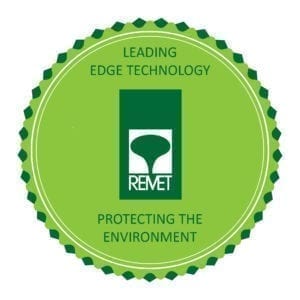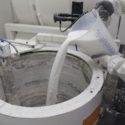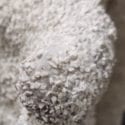Investment Casting Hygiene: Its a Bugs Life! Part 1
Enhanced colloidal silica binders, such as REMASOL, are composed of sub microscopic particles of silica suspended in latex and water at around pH10. The polymer blend increases green strength and reduces interdip dry times leading to greater throughput and reduced shell coats. It also provides a substrate in which to grow various yeasts and bacilli.
Most of the bacteria encountered are operator borne. On a sample taken from an established slurry, we have found, amongst others, Staphylococcus Aureus, which can cause Pneumonia, Escherichia Coli, a human gut bacteria, and Streptococcus of sore throat and tooth decay fame. Although this sounds alarming, all of these are found in and around most of the population, they are introduced to the slurry through breath, coughs, sneezes, hands, sweat as well as carried through on wax assemblies from the assembly bench.
Obviously, there is very little we can do to stop their introduction to the slurry, they are omnipresent. We can, however, reduce the impact of their presence.
The bacteria thrive in the slightly alkaline medium which is hopefully never subject to extremes of temperature. They consume the polymer, and produce an acid excreta, it is this which causes problems. For those readers that plan to visit their dentist shortly this is also the mechanism by which Strep.mutans decays teeth. Excessive bacterial activity will suppress pH over an extended period of time, and because of the high rate of reproduction it is possible to degenerate a slurry very quickly from a stable base. As we said in a previous post, pH is the mechanism by which stability is maintained, it is therefore of paramount importance that prompt action is taken in the event of a bacterial infection, better still is the prevention of a bacterial infection in the first place.
At its worse a bacterial infection is detected by a foul odour, but it is good practice to analyse a sample of slurry supernate at regular intervals using a proprietary total count culture slide. The result of this should be reviewed alongside the pH measurement and an accelerated gel test. A bacterial infection can be easily reduced or eliminated by using a diluted domestic chlorine bleach to the tank, This should be diluted by at least 50% and added at 0.1% by weight of total liquids as part of the routine water addition. Care should be taken not to overdose, and as with all slurry additives it should be used at the lowest effective concentration. If the pH remains low, adjust in accordance with REMET data sheet TS24.
Many users believe that prevention is better than cure, and regularly add a small amount of bleach as part of the regular water additions. The quantity added is determined empirically, and again should be at the lowest effective concentration. The quantity and frequency of the addition depends on the throughput, and tank residency of the particular foundry, but weekly additions are fairly typical for users employing this technique.
Finally, we should look at the exposure that operators encounter in the workplace. I asked a practising microbiologist about the hazards associated with working in close contact with bugs at relatively high concentrations. She stated that most of the bacteria are present in individual carriers anyway, but good hygiene should employed to avoid contamination of food and that obvious risks like eating and drinking in the immediate area should be avoided
There are a number of other sterilisation practices that can be explored, and I’ll write about these in a post later this week.
Usual disclaimers:
SAFETY PRECAUTIONS: Read MSDS before using this product.
NOTE: Unless specifically identified as a specification value, the above chemical, physical and particle size distribution values are typical properties. They are not specification values.
Contact your nearest REMET Sales Office regarding product specifications.
Contact your REMET Territory Manager and visit www.remet.com if you have any questions or require additional information.
Information and/or recommendations based on research and technical data believed to be reliable. Offered free of charge for use by persons with technical skills, at their own discretion and risk, without guarantee of accuracy REMET makes no warranties, express or implied, and assumes no liability as to the use of its products or of any information pertaining thereto. Nothing herein is intended as a recommendation to infringe any patent.
< Back to insights



